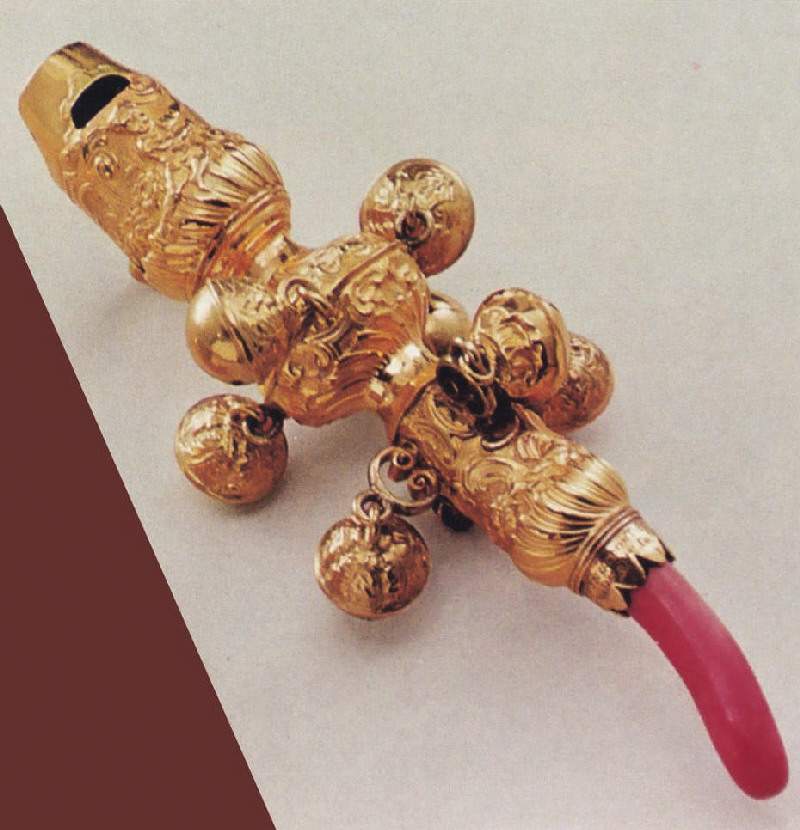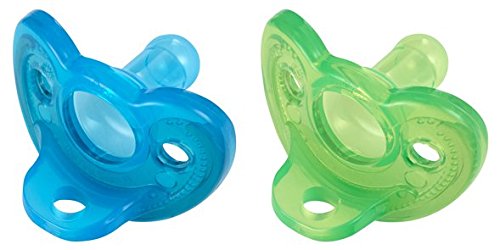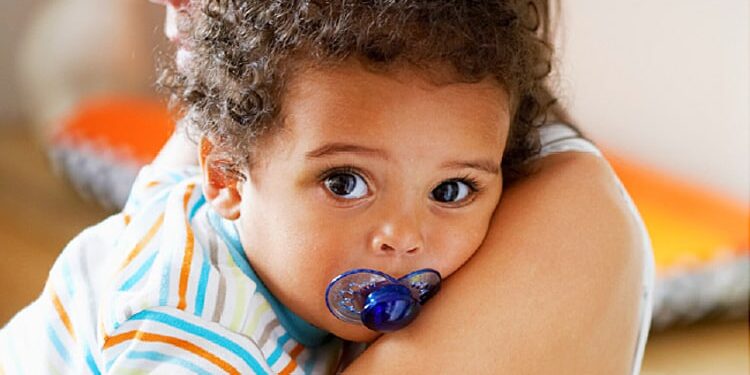Sometimes it seems like breastfeeding is going on forever. You know what I mean, those days when the baby has been on your breast / chest all day long. I have heard some parents refer to this as being a human pacifier. This is when family members and medical professionals might make it sound like a horrific experience. Don’t let your baby use you as a pacifier. Is that what’s happening? Not at all.
First of all, let’s go over a little history about how pacifiers started. Using an object to help your baby soothe is not a new concept. In fact, families have been doing this for centuries.
Primitive Pacifiers
The early history of pacifiers is inextricably bound to the development and use of the baby rattle. The two were often attached to both amuse and assuage a crying baby. Rattles were used for centuries by primitive adults for ceremonial and musical or dance use and could be of sticks, teeth, shells or pods. In addition, primitive man used rattles with bells to ward off evil spirits and even children wore bells.
Romans gave children peony wood bead necklaces that were pulled into the baby’s mouth for teething and to ward off illness. Such soothing bead necklaces were used for many centuries. In addition, some rattles were constructed with a handle that had inserted into it a smooth piece of stone or bone that was used for the baby to suck upon and teethe. This end of the rattle was known as the gum stick and could be made of rock crystal, ivory, agate, carnelian, mother-of-pearl, bone, or coral, all of which felt cool upon the gums. (Bryk, N)

The pacifier we know of today has been around since about the beginning of the 1900’s.
Modern Day Pacifiers
When the sap from rubber trees was viably used in the manufacture of household products by the middle of the nineteenth century, nipples for nursing bottles and simple soothers were devised. In the twentieth century, with better refinement of rubber and associated materials, many companies entered into the pacifier market. You can read more about the construction and history of pacifiers here.
Nowadays, pacifiers are typically made from latex or silicone. They are designed to resemble the mother’s breast and nipple. Ideally, pacifiers should be made in one piece with one kind of material to reduce choking risks.

Suck Reflex
Babies have a high need to suck. It’s true sucking is one of the reflexes babies are born with. You may have ultrasound pictures of your baby sucking in the womb. Sucking is soothing and comforting for your baby. By the time your baby is about 3 months old, they start to have a little more control over sucking, but until then, it’s a reflex triggered by stimulation to the roof of the mouth.
So how did we get from soothing comfort to your baby is using you as a pacifier?
Personally, I find this statement offensive and rude. For a couple of reasons. First of all, it is insinuating your baby is using you. Your newborn baby is not using you or manipulating you in any way. That’s impossible. It is true that babies like to suck, and they like to be close to their birth parent. This may look like manipulation, but it’s a basic need.
Fulfilling A Need
When babies are breast/chestfeeding, they are fulfilling a need. They need to be fed. Babies also receive much more from the act of breast/chestfeeding that they cannot get anywhere else. Babies receive nurturing, security, trust, warmth, and soothing while at the breast. This is not anything they will receive from pacifier use. We know a pacifier was meant to be the replacement for suckling at the breast. Instead, society sees breastfeeding as the replacement for the pacifier.
It is not uncommon to see a baby gently suckling at the breast, making little mouthing motions while they doze. This is what we call non-nutritive sucking and it is therapeutic for babies. You may see this during cluster feeding, at the end of a feed, or just on it’s own. This is usually when the breast is compared to a pacifier, and the baby is quickly removed.
Feeding On Demand
A baby is expected to be “done” breast/chestfeeding by a certain time, and anything over that time is just pacifying. How do you know your baby is actually done nursing? They are still getting milk during that non-nutritive suck time, just not at the faster rate they get it when actively feeding. When baby is at the breast, they are passing that signal to your body to make the milk. If you take your baby away from the breast before they are done, what message are you sending your body?
The American Academy Of Pediatrics encourages new parents to feed babies on demand. This means whenever your baby is showing feeding cues such as rooting and sucking. These cues may be frequent at times, or they may be spread out at other times. This is all normal behavior for a breast/chestfeeding baby. You can read all about the American Academy of Pediatrics and their statement on breastfeeding here.
Comfort Nursing
I understand breastfeeding a baby can feel physically and emotionally draining. I have been in that place with my babies as well. However, it helps to know why they do what they do, and know it is not manipulation in any way. Nursing for comfort is a normal, expected part of development. As newborns, you may notice your baby does more of this when they are tired or overstimulated. As an older baby, you may notice more comfort nursing if they are scared or hurt. Breastfeeding is nurturing, and babies feel safe when they are close to you. If comfort nursing is feeling overwhelming, try carrying your baby in a sling or a wrap. They will be close to you, comforted, and secure. If you want more information on breastfeeding while babywearing, you can check out this blog.

These days, our society isn’t necessarily baby-friendly. We want babies to adapt to what we are doing, but that’s not altogether realistic. Answering your baby’s cues is the best way to help them adapt to life outside the womb, and comfort nursing is very much part of that. Above all, your baby is not manipulating or using you in any way. They are staying close and connected, which is important for development. In conclusion, if you ever have any concerns about your baby’s eating patterns or behaviors, reach out to a lactation consultant. That’s what they are there to help you with.





